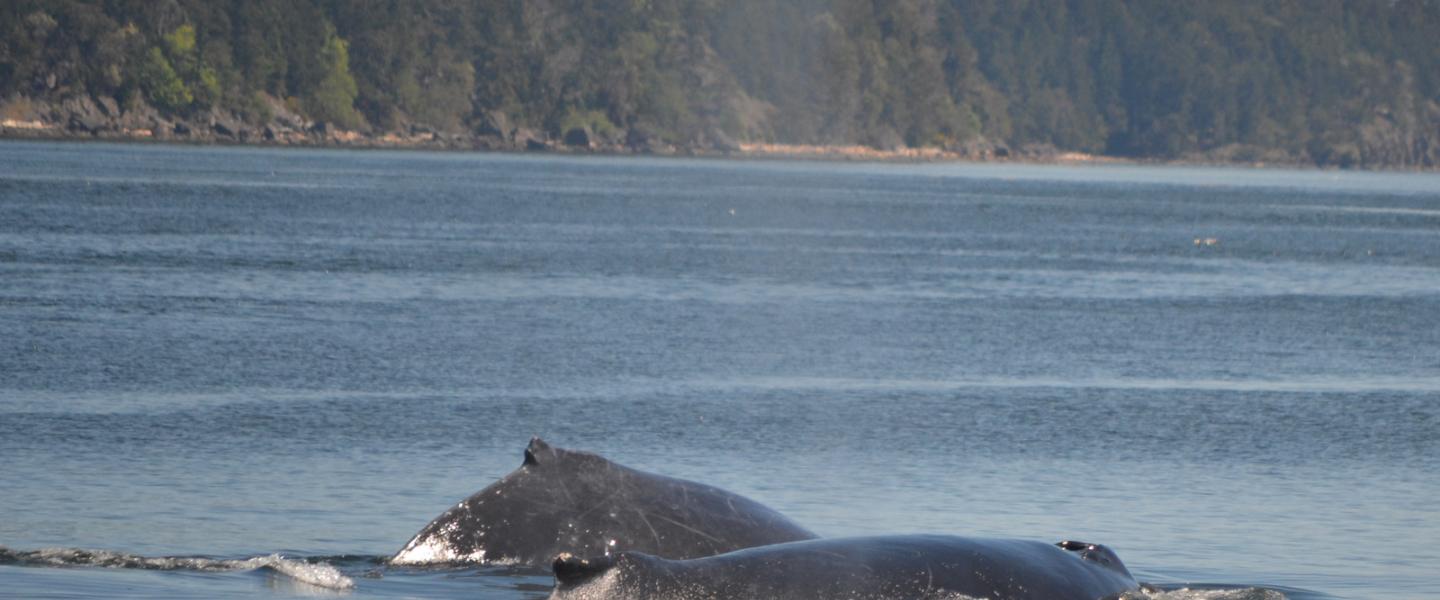
What's up, humpbacks! On our whale watch on M/V Seahawk today, we had a chance to encounter these massive baleen whales out in the Rosario Straight - a real treat, considering we don't always get the chance to pass by Orcas and Shaw Island on our tours. These beautiful islands greeted us with views of rocky bluffs dotted with wildflowers, pine trees, and the ever graceful medrona trees. The sun sparkled brightly overhead, hinting of exciting things to come. Not a single breeze waved through the trees except that created by the speed of our vessel as we glided over the silky smooth waters. What a day!
Humpback whales have an interesting history in this area, but they are starting to provide a perfect example of how an ecosystem can heal and recover from horrors in the past. The Salish Sea is an incredibly diverse area for marine animals, visited throughout the year by different groups of animals. Humpback whales have historically come to this area in the warm summer months to feed on small fish and krill, having spent their winters in the much warmer waters of Hawaii, Mexico, or the Phillipines breeding and giving birth. The sad thing is that these animals were nearly wiped out by whaling operations through the 1800s and early 1900s. Although the North Pacific population has an estimated 24,000 animals currently, there were probably less than 1,000 left in the 1960s at the time that commercial whaling was made illegal. They've made an incredible recovery, and now we're starting to see them again here in the Salish Sea (only as recently as the early 2000's).
For us as whale watchers, this is AMAZING. These animals are incredibly graceful and can be very surface active. They spend a good portion of their day feeding, since they are massive animals that have been fasting for a good part of the year, and that's why we think they're starting to come back to this area. They have no need to fear harpoons anymore, and there is certainly a plethora of food for them here!
Off the bow of M/V Seahawk, excited passengers pointed to the exhalations of a couple of these large animals. Tail flukes arced gracefully above the surface of the water before disappearing into the sea, mere hints of a much larger creature hiding sub-surface. These "Big-Winged New Englanders" are always welcome here, and we hope that we will continue to see them in greater numbers as the years go by!